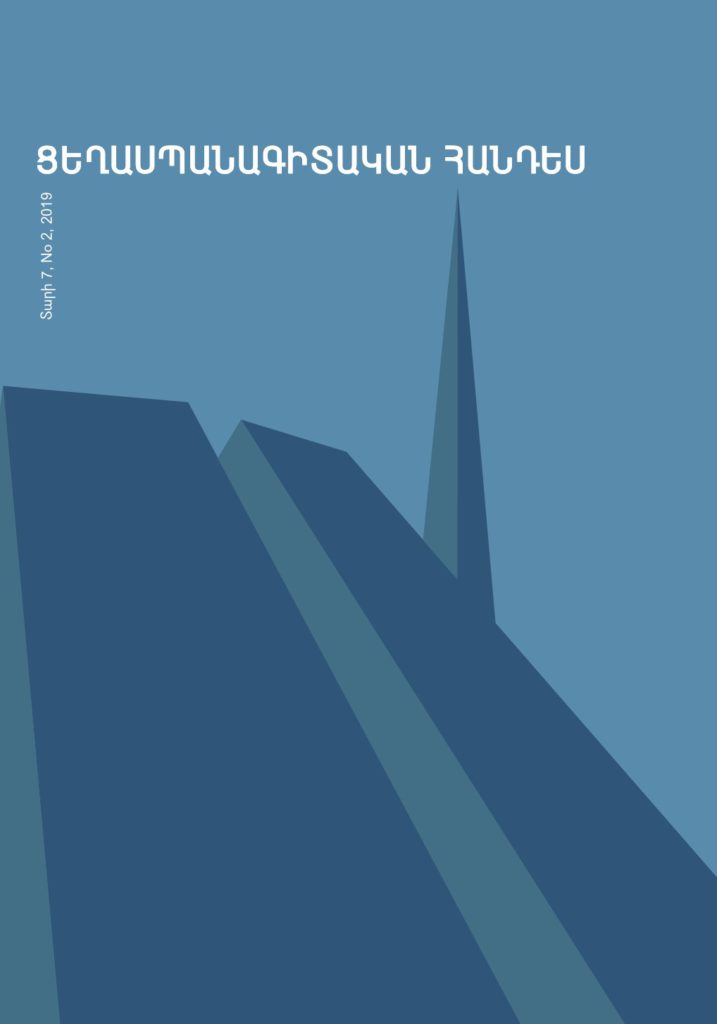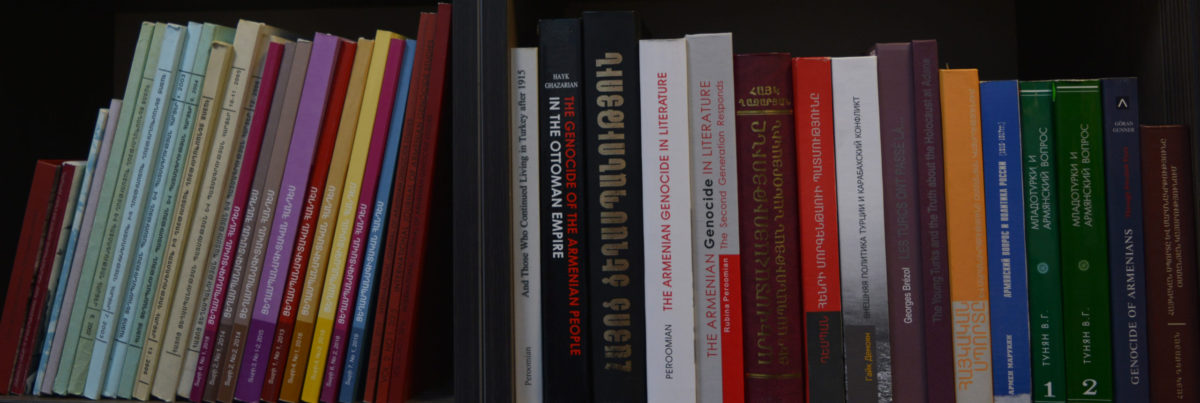
Ts՚eghaspanagitakan handes (“Journal of Genocide Studies”), 7 (2), 2019
Research fields – Armenian Genocide, Turkish nationalism, nation-building and state-building programs through genocides and ethnic cleansings.
E-mail: galustyanra@gmail.com
Pages 9-32
Abstract
Founded in 1889 the “Committee of Union and Progress,” after several internal reconstructions, became the main policymaker of the Ottoman Empire for a decade, laying the foundation of the Republic of Turkey as well.
The activity of the “Committee of Union and Progress” and the Young Turk movement has been a research theme for Soviet, Turkish, Western and Armenian researchers. In those publications, the characteristics that are given to the organization usually go from one extreme to another. The aim of the article is to present the formation of the ideology of the Committee from 1889-1908 by presenting its structural peculiarities. For the solution of this goal, the activity of the Committee in the article is divided by the First Congress of the Ottoman Liberals in 1902, which was a watershed between the old structure of the Committee and its early ideology and a new one.
The article emphasizes the development of the Young Turk nationalism. In particular, it shows that Turkish nationalism, which was a debate topic for historiography, was already a formed ideology in 1908 which was put into motion months after the coup d’état by the Committee. Moreover, the party ideology also encompassed some racial elements. Coming to power in 1908, the Young Turks had to choose not between Turkism and Ottomanism but to single out the methods to implement Turkish nationalism in the still multiethnic empire. Separate ideological aspects of the “Committee of Union and Progress” (racism, elitism, positivism, Islamism) are also discussed.
Keywords: “Committee of Union and Progress,” revolution, nationalism, Islam, race, Turkism.
Received on 15.08.2019
Accepted on 27.11.2019
Research fields – the Armenian Genocide in the Turkish and Armenian-Turkish press, national identity.
E-mail: elina-mirzoyan@mail.ru
Pages 33-44
The article presents a brief history of Constantinople’s first Russian-language Young Turk periodical “Stambulʿskie Novosti” (Istanbul News, 1909-1910) and its reflection of Young Turk nationalism. The newspaper was distributed in the Ottoman Empire, Russia, Bulgaria, Western European countries. The editorial staff included prominent Turkish political and public figures, under the editorship of Djelal ed-Din Korkmasov, a prominent representative of the Russian and Caucasian intelligentsia. The periodical was also an attempt at rapprochement of Russian-Turkish relations, the exchange of revolutionary experience, and the dissemination of nationalist views. Although the newspaper was intended to serve the aims of the Russian authorities, it soon became a tool for propagation and dissemination of the Young Turk ideas.
Accepted on 12.12.2019
E-mail: r.tatoyan@gmail.com
Pages 45-57
Abstract
The article presents one of the episodes of the Armenian Genocide: the extermination of Prkhus village of Khlat (Akhlat) sub-district of Bitlis (Baghesh) district of Bitlis province, Western Armenia on May-June, 1915.
The study of process and results of extermination of Prkhus village is especially important with the following specific considerations: 1) it was the largest Armenianpopulated settlement of Khlat province, 2) the destruction of that settlement was carried out in the same pattern as the actions against other Armenian villages of Khlat province, i.e., on the example of Prkhus we can get an idea about the whole process of elimination of the Armenian population of Khlat sub-district.
The testimonies of Armenian Genocide survivors from Prkhus village, and, particularly, Socrat Mkrtchyan’s memoir kept in the archives of the Armenian Genocide Museum-Institute were used as a primary source for this study.
Keywords: Armenian Genocide, Prkhus, Khlat, Bitlis, refugees, orphans.
Received on 10.09.2019
Accepted on 23.11.2019
Pages 58-82
Abstract
The article discusses the policy of annihilation of the Armenian population of Khoy and Salmast in Iran perpetrated by the Ottoman Empire during the First World War.
Based on numerous testimonies of the Armenian Genocide survivors as well as the accounts of foreigners the article aimed at presenting the extermination policy of Armenians beyond the borders of the Ottoman Empire. The responsibility of the annihilation of the Armenian population of Khoy and Salmast rested with the Ottoman Empire, which had organized and implemented the genocidal act through its army and Kurdish irregulars with the connivance of Iran.
The research and presentation of this subject may foster the Turkish denialist historiography to reject the usage of an unnecessarily speculative hypothesis, according to which the deportation of the Armenian population was largely conditioned by the situation of war and aimed at ensuring the security of the population in the military zones.
Keywords: World War I, Armenian massacres, Khoy, Salmast, Armenian Genocide.
Received on 29.08.2019
Accepted on 23.10.2019
Research fields – comparative analysis of the activities of the Turkish Special Organization (Teşkilât-ι Mahsusa), comparative genocide studies.
E-mail: stinesa@mail.ru
Pages 83-106
Abstract
This article is an attempt to comparatively analyse the actions of “Teşhkilat-i Mahsusa,” the German “SS” and the Indonesian organization “Pancasila Youth,” which became the tool of implementation of the Armenian Genocide, the Jewish Holocaust and the mass killings of members of the Communist Party of Indonesia.
The article presents the history of formation and the structure of these organizations and also discusses the circumstances and goals of their formation, their ideology and activities before the genocide of Armenians, Jews and mass killings of the Indonesian communists.
The article also refers to the study of the acts by comparing the applied mechanisms of these structures.
The study attests the role of these structures in the process of the Armenian Genocide, the Jewish Holocaust and the mass killings of the members of the Indonesian Communist Party.
Keywords: Armenian Genocide, Jewish Holocaust, mass killings of Indonesian Communists “Teşkilati Mahsusa,” German “SS,” the party system, ideology, pre-genocidal activity, army.
Received on 26.08.2019
Accepted on 27.11.2019
Research fields – memoirs of the survivors of the Armenian Genocide, reflection of the role of Germany and Germans in the Armenian Genocide in Armenian Historiography and Memoirs.
E-mail: mirzoyan.aram@gmail.com
Pages 107-117
Received on 30.08.2019
Accepted on 26.11.2019
Pages 118-121

All works in the "Journal of Genocide Studies" are licensed under a Creative Commons Attribution-NonCommercial 4.0 International License.
